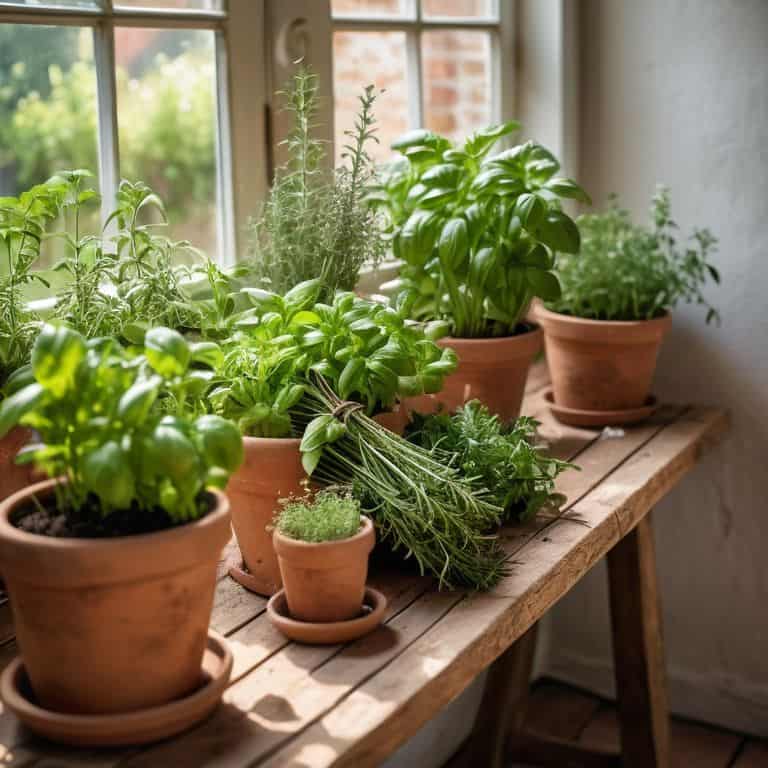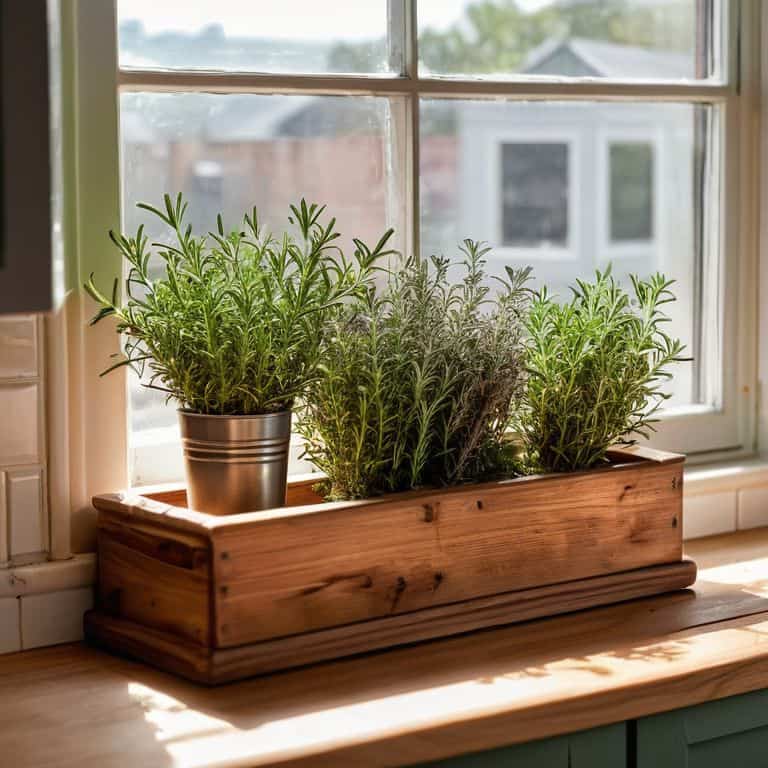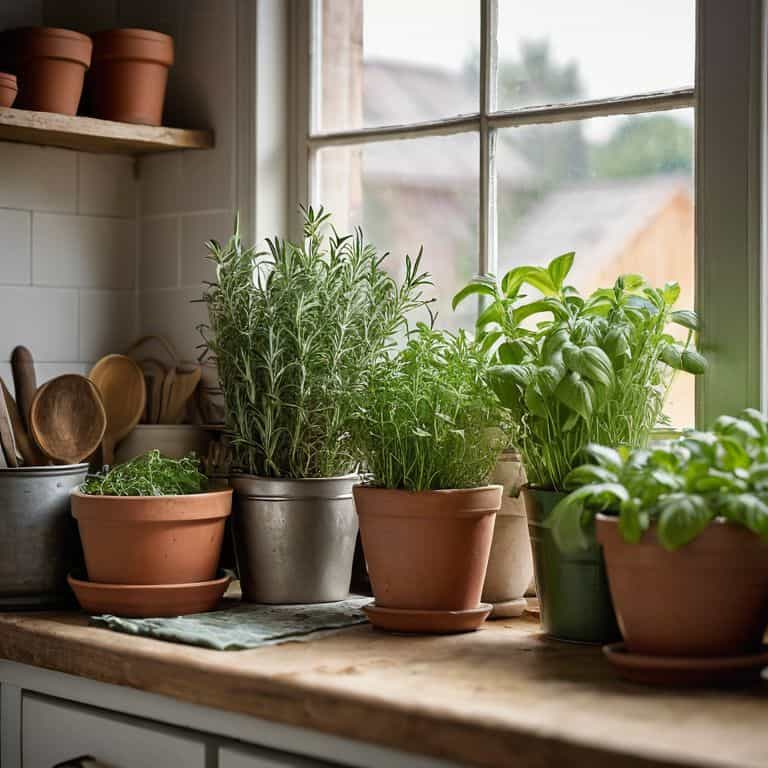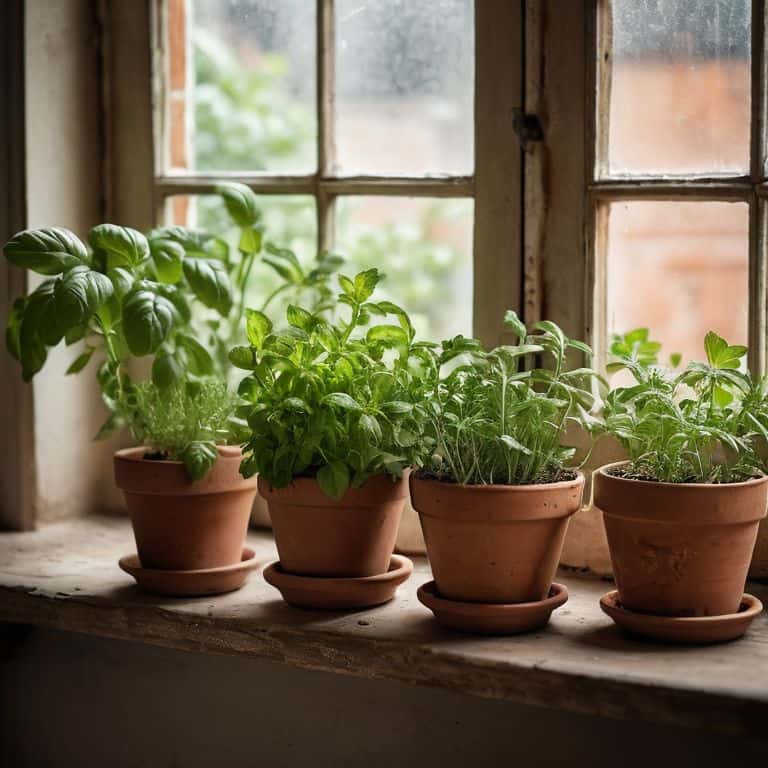I still remember the day I decided to ditch the fancy cocktail bar scene and start growing my own best herbs to grow in a kitchen garden. It was a revelation – no more relying on bland, store-bought basil or wilted rosemary. I was finally in control of my own flavors, and it was incredibly empowering. As I began experimenting with different herb combinations, I realized that most people are stuck in a rut, believing that growing a thriving kitchen garden is some sort of mystical art. But trust me, it’s not – with a little bit of know-how and some dirty hands, you can create a veritable paradise of fresh flavors right in your own backyard.
In this article, I’ll share my hard-won secrets for cultivating the best herbs to grow in a kitchen garden, from the easiest-to-grow varieties like mint and cilantro to the more finicky ones like thyme and sage. I’ll walk you through the process of preparing your soil, selecting the right herbs for your climate, and troubleshooting common pitfalls. My goal is to give you the confidence to get out there and start growing your own herbs, so you can start enjoying the unbeatable flavor and freshness that comes with having a kitchen garden. By the end of this guide, you’ll be well on your way to creating a lush, thriving oasis that will take your cooking to the next level.
Table of Contents
Guide Overview: What You'll Need

Total Time: 1 hour 30 minutes to 2 hours 30 minutes
Estimated Cost: $20 – $100
Difficulty Level: Easy
Tools Required
- Gardening Gloves for protection
- Small Shovel for digging
- Rake for soil preparation
- Watering Can for watering plants
Supplies & Materials
- Herb Seeds choose from basil, mint, rosemary, thyme, cilantro, parsley, dill, and oregano
- Potting Soil with a depth of 6 inches
- Planters or Containers with a size of at least 6 inches by 6 inches
- Fertilizer balanced, water-soluble
- Mulch optional, for moisture retention
Step-by-Step Instructions
- 1. First, let’s get our hands dirty and choose the right spot for our kitchen garden – I’m talking about a spot that gets plenty of sunlight, at least 4-6 hours a day, and has good drainage to prevent waterlogged soil. We want our herbs to thrive, not drown.
- 2. Next, we need to prepare the soil for our herbs. This means adding some organic matter like compost or well-rotted manure to give our herbs a nutrient-rich environment to grow in. I like to use a mix of compost and worm casting to give my herbs an extra boost.
- 3. Now it’s time to select the best herbs for our kitchen garden. I’m a big fan of growing a mix of classic herbs like basil, rosemary, and thyme, as well as some more unusual ones like lemon balm and chamomile. The key is to choose herbs that you’ll actually use in your cooking, so think about your favorite recipes and what herbs you use most often.
- 4. Once we’ve selected our herbs, it’s time to plant them. I like to use a combination of seeds and seedlings, depending on the herb. For example, basil is easy to grow from seed, while rosemary can be a bit more finicky and is often better started from a seedling. Make sure to plant your herbs at the same depth as they were in their pots, and water them well after planting.
- 5. As our herbs start to grow, we need to make sure they’re getting enough water and nutrients. I like to use a soaker hose to deliver water directly to the roots of the plants, reducing evaporation and runoff. I also like to add a little fish emulsion to the water every now and then to give my herbs a boost of nutrients.
- 6. One of the most important things to remember when growing herbs is to prune them regularly. This helps to encourage bushy growth, prevent the plants from flowering, and keeps them from getting leggy. I like to prune my herbs every week or two, depending on how quickly they’re growing.
- 7. Finally, let’s talk about preserving our herbs so we can enjoy them all year round. I like to use a combination of drying, freezing, and infusing to preserve my herbs. For example, I’ll dry my rosemary and thyme to use in soups and stews, while I’ll freeze my basil to use in pesto and other sauces. I’ll also infuse my herbs in vinegar or oil to make flavorful condiments and marinades.
Best Herbs to Grow in Kitchen

When it comes to cultivating a thriving herb garden, I’ve found that easy to grow herbs indoors can be a total game-changer. Not only do they add a burst of freshness to any dish, but they’re also incredibly low-maintenance. I mean, who doesn’t love the idea of snipping off a few sprigs of rosemary or thyme to add to their favorite recipe? To get started, consider investing in some herb garden plans for small spaces – they’re perfect for urban gardeners or those with limited room to spare.
One of the biggest benefits of growing herbs at home is the ability to harvest them at peak freshness. There’s nothing quite like the flavor and aroma of a just-picked herb, and it’s a total revelation when you compare it to the wilted stuff you often find at the supermarket. Of course, there are some common pitfalls to watch out for – common herb garden mistakes like overwatering or under-pruning can quickly lead to disaster. But don’t worry, with a little practice and patience, you’ll be well on your way to becoming an herb gardening pro.
As you start to plan out your herb garden, be sure to consider choosing the right herb pots. You’ll want to select containers that are well-draining and provide plenty of room for your herbs to grow. I like to use a mix of small pots and larger planters to create a visually interesting display – it’s all about experimenting and having fun! With a little creativity and some basic herb gardening tips for beginners, you’ll be enjoying a bountiful harvest in no time.
Avoiding Common Mistakes in Herb Gardens
When I first started growing my own herbs, I made some rookie mistakes that cost me a few batches of withered basil and sad rosemary. But I learned from those mishaps, and now I’m passing on the wisdom. One of the biggest pitfalls is overwatering – it’s a surefire way to kill your poor plants. I also used to underestimate the power of good sunlight and air circulation. Now, I make sure to give my herbs a spot that gets at least 4-6 hours of direct sunlight and a gentle breeze to keep them happy and healthy.
By avoiding these common mistakes, you’ll be well on your way to growing a thriving kitchen garden. Trust me, there’s no better feeling than snipping off a few fresh sprigs of parsley or thyme to add to your latest culinary creation. With a little practice and patience, you’ll be a pro at growing your own herbs in no time.
Easy Indoor Herb Gardening Hacks
Now that we’ve covered the best herbs to grow in your kitchen, let’s talk about how to make indoor gardening a breeze. I’ve got a few tricks up my sleeve to keep your herbs thriving, even in the darkest of winter months. For starters, make sure you’re giving your herbs a good amount of light – I’m talking south-facing windows or grow lights, people!
I also swear by self-watering planters, which take the guesswork out of keeping your soil moist. And don’t even get me started on the magic of trellises – they’re a game-changer for vining herbs like mint and lemongrass. With these easy hacks, you’ll be enjoying fresh, fragrant herbs all year round, no matter the weather outside.
My Top 5 Tips for Growing a Kick-Ass Kitchen Herb Garden
- Start with the wild ones: I’m talking about herbs like lemon balm, chamomile, and mint – they’re easy to grow and will add a crazy depth of flavor to your cooking
- Don’t be afraid to get creative with your herb pairings – like basil and strawberries or rosemary and garlic – the weird and wonderful combos are often the most exciting
- Make sure you’re using the right soil for your herbs – I like to mix my own using a combo of compost, perlite, and vermiculite to give my plants the best shot at thriving
- Keep it real, keep it local: choose herbs that are in season and will thrive in your climate – it’s all about working with nature, not against it
- Don’t forget to have fun and experiment with new herbs and flavors – that’s where the magic happens, and you’ll be surprised at the amazing things you can create with a little curiosity and courage
Get Growing: 3 Key Takeaways for Your Kitchen Herb Garden
Start small and get creative with your herb garden – don’t be afraid to experiment with unusual pairings like basil and strawberries or rosemary and lemons
Remember, the most important thing is to have fun and get your hands dirty – don’t worry if your garden isn’t perfect, it’s all about the journey and the delicious flavors you’ll create
From easy indoor hacks to avoiding common mistakes, the key to a thriving kitchen herb garden is to stay curious, keep learning, and always be on the lookout for new ways to nurture your plants and elevate your cooking
Sowing the Seeds of Flavor

The best herbs to grow in your kitchen garden are the ones that spark a sense of adventure and curiosity – the ones that make you wonder what kind of magic you can create with a pinch of this and a sprinkle of that.
Tom Navarro
Sowing the Seeds of Flavor
As we wrap up our journey through the world of kitchen gardening, let’s take a moment to reflect on the impact that growing your own herbs can have on your cooking. From the simple yet powerful flavor of fresh basil to the more complex, nuanced taste of homegrown rosemary, the difference is undeniable. By following the steps outlined in this guide and avoiding common pitfalls, you’ll be well on your way to cultivating a thriving indoor herb garden that will elevate your dishes and inspire your creativity in the kitchen.
So, don’t be afraid to get a little messy and experiment with new herbs and flavors. Remember, the joy of kitchen gardening lies not just in the end result, but in the process of creation itself. As you nurture your plants and watch them grow, you’ll develop a deeper connection to the food you eat and the world around you. Happy gardening, and bon appétit!
Frequently Asked Questions
What are the most versatile herbs to grow in a kitchen garden for everyday cooking?
For everyday cooking, I swear by basil, rosemary, and thyme – they’re the ultimate kitchen garden trio. Basil adds a bright punch to pesto and caprese salads, while rosemary brings a piney depth to roasted veggies and meats. Thyme is the unsung hero, elevating soups, sauces, and marinades with its subtle earthiness. Trust me, these three will become your go-to’s!
How much sunlight and water do different herbs need to thrive in an indoor kitchen garden?
Ah, the million-dollar question! Sunlight and water needs vary wildly between herbs. Basil and rosemary love soaking up 4-6 hours of direct sunlight, while mint and parsley prefer partial shade. Watering-wise, think of it like a Goldilocks situation – not too much, not too little. Most herbs need about 1-2 inches of water per week, but it’s all about feel, you know?
Can I grow herbs year-round in my kitchen garden, or are there certain seasons that are better for specific herbs?
Absolutely, you can grow herbs year-round, but some thrive in specific seasons. For example, basil loves the warmth of summer, while rosemary and thyme are more resilient in cooler months. With a little creativity and the right setup, you can enjoy a steady harvest of fresh herbs all year long – I do it in my own kitchen garden, and it’s a total game-changer!
